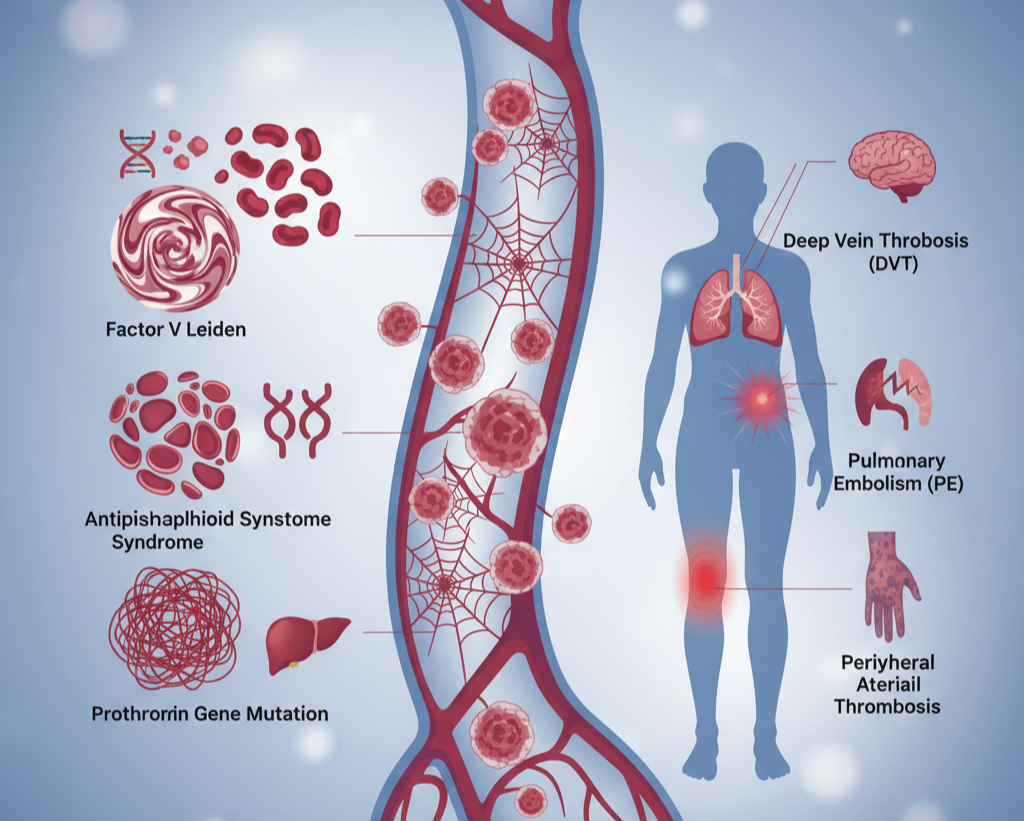Our blood does an amazing balancing act day after day, moving freely to deliver oxygen and nutrients but clumping in a split second when we’re injured.
This balance is crucial to survival. But when this process goes awry, it can cause blood clotting disorders, which result in either too much clotting or bleeding too much.
Understanding such blood disorders, their presentation, and when to obtain medical attention is important for early diagnosis and treatment.
Table of Contents
ToggleWhat Are Blood Clotting Disorders?
Blood clotting diseases (or coagulation diseases) are diseases that impair the capacity of the blood to clot normally. In a normal situation, when a blood vessel is damaged, platelets and clotting factors combine to prevent bleeding.
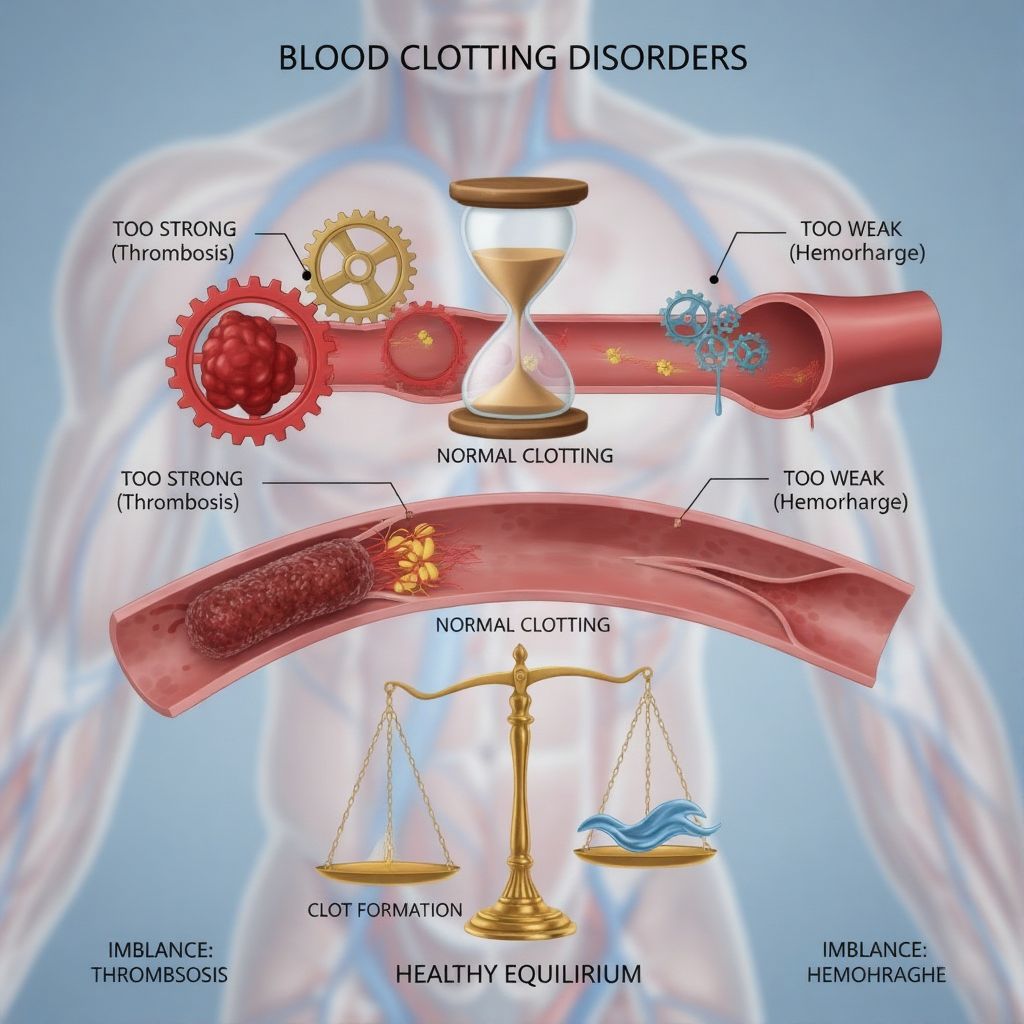
When this function is too strong, it results in abnormal clots that cause an interruption of the flow of the blood. When it is too weak, there is excessive bleeding.
A healthy body is in delicate equilibrium between clot formation and its dissolution. Upsetting this equilibrium will lead to blood clotting disease disorders that can result in potentially fatal complications such as deep vein thrombosis (DVT), pulmonary embolism, or internal hemorrhage.
Uncoded’s cutting-edge genetic testing technology, like Next-Generation Sequencing (NGS) identifies genetic mutations associated with these disorders, allowing early diagnosis and improved management.
Types of Blood Clotting Disorders
Disorders of clotting are widely classified into two groups:
Conditions Causing Increased Clotting (Thrombophilia)
Thrombophilia is a condition in which blood becomes too prone to clot, obstructing veins or arteries. Inherited and acquired types are as follows:
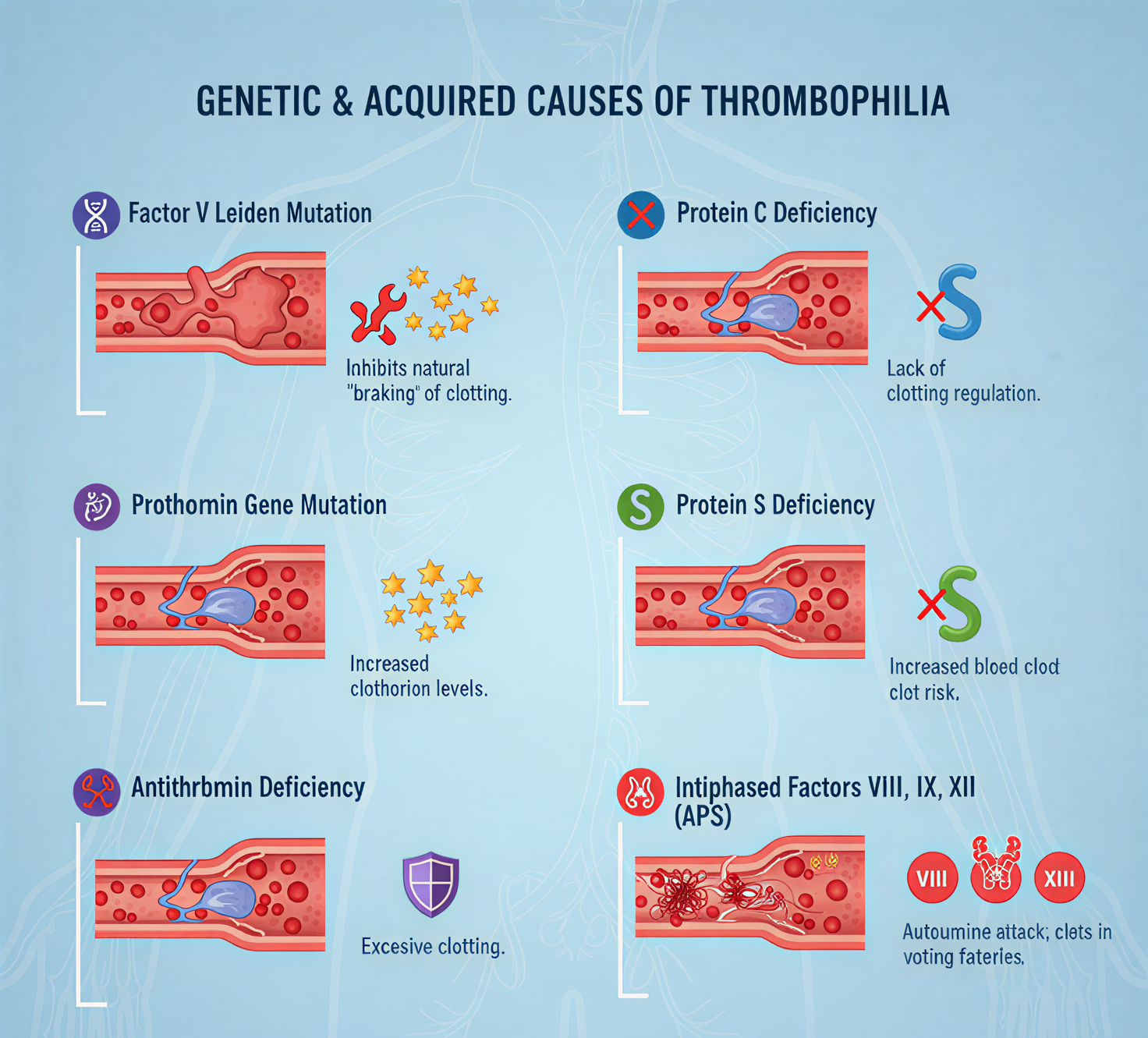
- Factor V Leiden Mutation: An Inherited genetic mutation that inhibits natural braking mechanism to halt clotting, increasing the likelihood of clot development.
- Prothrombin Gene Mutation: This mutation increases prothrombin levels within the blood, predisposing to thrombosis.
- Protein C Deficiency: Protein C assists in the regulation of clotting by inactivating some of the clotting factors. Deficiency can cause abnormal clots to form.
- Protein S Deficiency: Like Protein C, Protein S also controls clotting. When levels are low, the risk of blood clots increases.
- Antithrombin Deficiency: Antithrombin inhibits excessive clotting by inactivating clotting factors. A deficiency leads to a high risk of DVT or pulmonary embolism.
- Antiphospholipid Syndrome (APS): An autoimmune condition in which antibodies mistakenly bind to proteins in the blood, causing clotting in veins and arteries.
- Increased Factors VIII, IX, or XI: Increased levels of these clotting factors may also raise the risk of undesirable clots.
Bleeding Disorders (Disorders That Lower Clotting)
Conversely, bleeding disorders interfere with clotting of blood, resulting in spontaneous or prolonged bleeding. Some of the important examples are
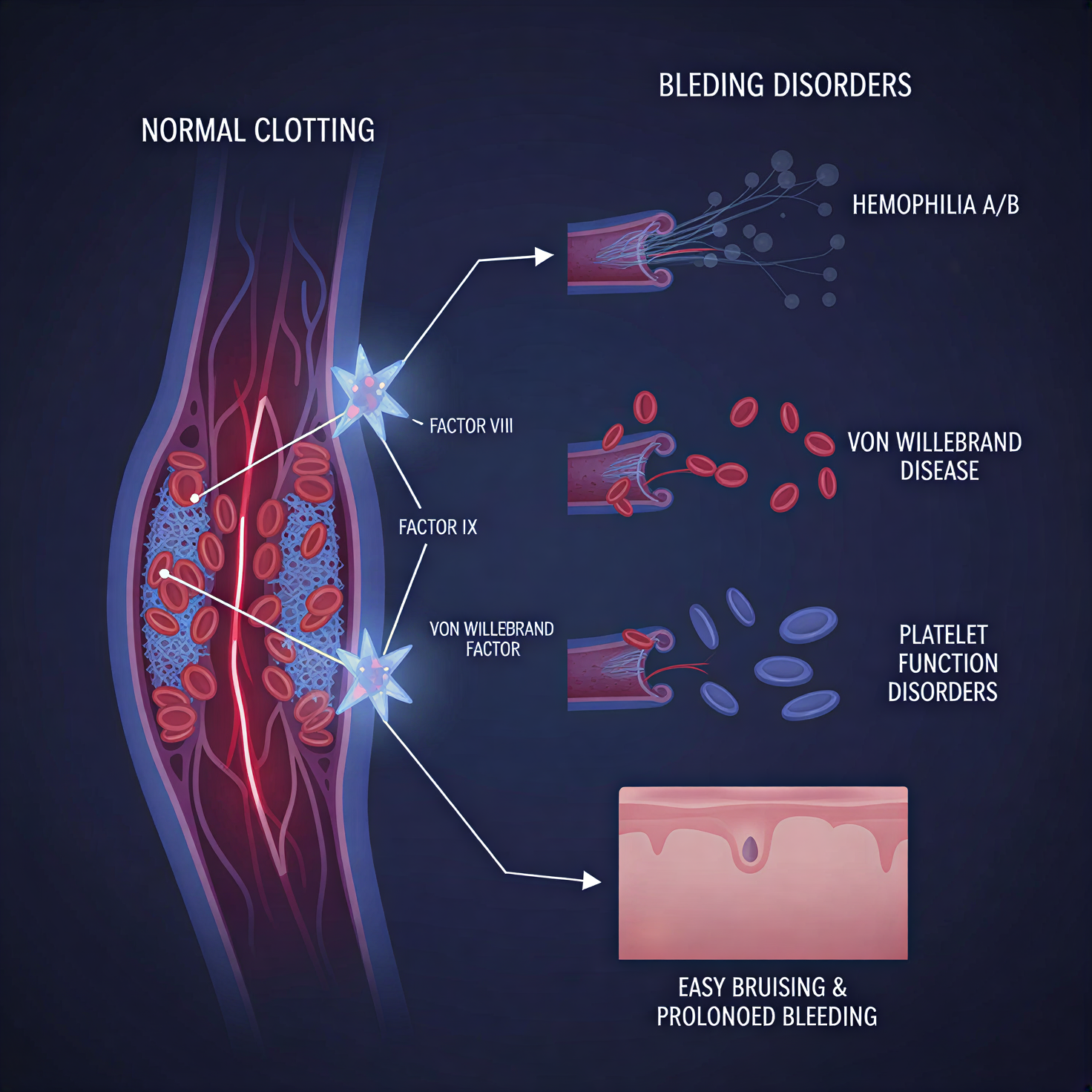
- Hemophilia A and B: Genetic disorders due to the absence of clotting factors VIII (Hemophilia A) or IX (Hemophilia B). Unnecessary prolonged bleeding or hemorrhage inside the body due to even small injuries can result.
- Von Willebrand Disease: The most frequent inherited bleeding disease resulting from a lack or defect in von Willebrand factor, an aid to platelet clumping.
- Platelet Function Disorders: Here, the platelets may be present in normal numbers but are ineffective, causing easy bruising and prolonged bleeding.
At Uncoded, there are expertly designed testing panels that identify both inherited and acquired blood clotting disorders, allowing for precise diagnosis and tailored treatment advice.
Main Signs of Blood Clotting Diseases
Excessive clotting or excessive bleeding defines the symptoms of blood disorders, depending on the individual. Identification of these signs of a blood clotting disorder at an early stage can avoid such serious complications.
Symptoms of Excessive Clotting (Thrombosis)
When the blood clots occur where they should not, they can restrict normal flow and lead to:
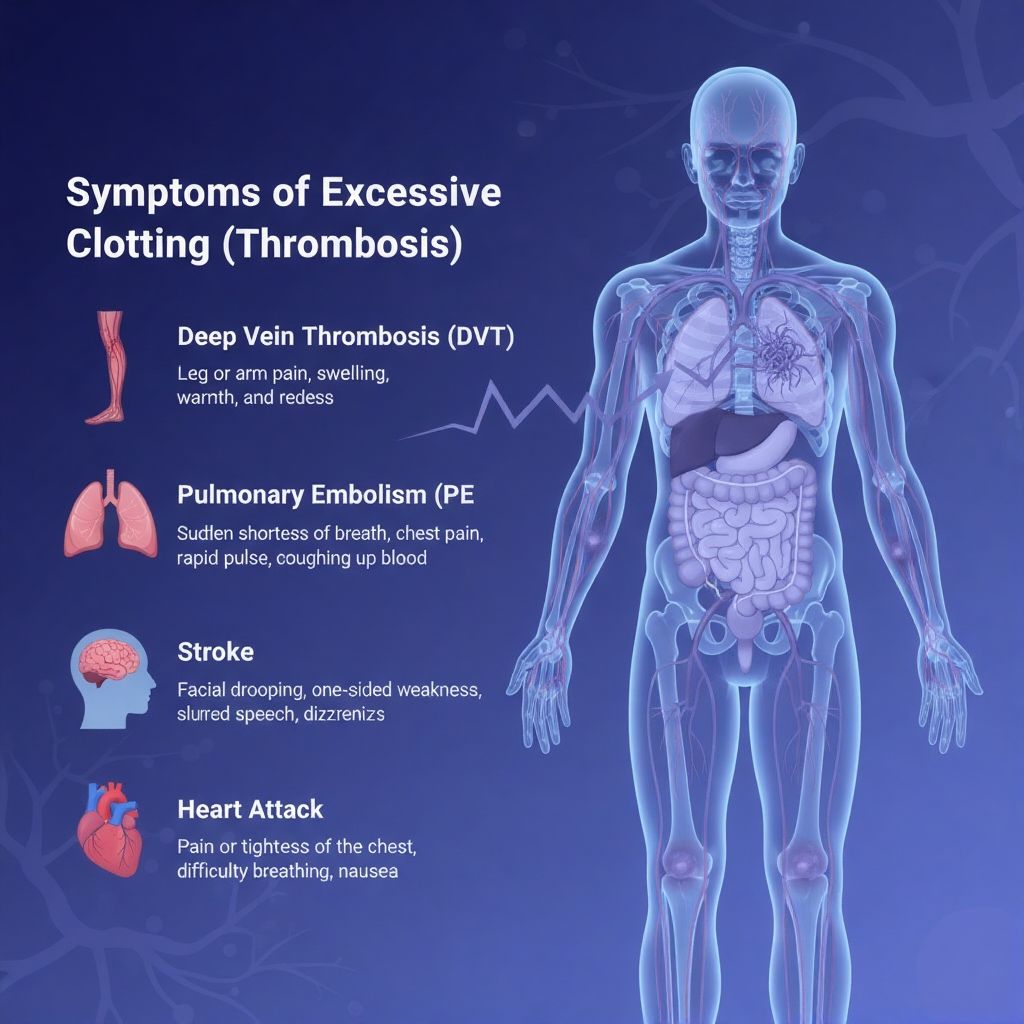
- Deep Vein Thrombosis (DVT): Leg or arm pain, swelling, heat, and redness are typical blood disease signs of DVT.
- Pulmonary Embolism (PE): Sudden shortness of breath, chest pain, rapid pulse, or coughing up blood can be caused by a clot migrating to the lungs — a medical emergency.
- Stroke: When a clot prevents blood from flowing to the brain, facial drooping, one-sided weakness, slurred speech, and dizziness occur.
- Heart Attack: Pain or tightness in the chest, difficulty breathing, and nausea can result when a clot blocks the flow of blood to the heart.
Excessive Bleeding Symptoms
Symptoms of blood disorders are reversed in people with decreased ability to form clots; bleeding happens too easily or for an extended period of time:
- Easy or unexplained bruising
- Increased bleeding after cuts or surgery
- Recurrent nosebleeds or gum bleeding
- Menstrual heavy periods in women
- Blood in the urine or stool
- Spontaneous bleeding inside the body that causes joint pain or swelling
These are signs that may point to what are blood clotting disorders that require immediate medical evaluation.
Causes and Risk Factors
Blood clotting disorders can be genetic (inherited from family members) or acquired (acquired later in life).
- Genetic causes: Mutations, including Factor V Leiden, Prothrombin G20210A, or anticoagulant natural deficiency (Protein C, S, or Antithrombin).
- Acquired causes: Diseases such as liver disease, autoimmune illnesses (such as lupus), cancer, or medication side effects.
Lifestyle and health factors:
Prolonged periods of immobilization (e.g., post-surgery or extended flights)
- Smoking and obesity
- Pregnancy and hormonal contraception use
- Chronic diseases like diabetes or kidney disease
Knowledge of these factors assists people and medical practitioners in identifying and controlling blood clotting diseases and disorders successfully.
When to Get Medical Assistance
You ought to get immediate medical care if you experience:
- Unexplained swelling, pain, or redness of your limbs
- Sudden shortness of breath or chest discomfort
- Heavy or frequent bleeding for no clear reason
- Repeated miscarriages (women, possibly due to APS)
- Family history of diseases disorders of blood clotting
Early diagnosis can greatly improve outcomes. Always see a qualified hematologist if you suspect an unusual pattern of clotting or bleeding.
Last words
Knowledge of the blood clotting disorders is critical because they are silent but potentially lethal. Detection of early signs of a blood clotting disorder, whether uncontrolled bleeding or unexpected clotting, can be the difference between life and death.
Breakthroughs in genetic testing, like those provided at Uncoded, have never been more accessible in diagnosing the root cause of blood disorders of this nature. With customized treatment and preventive measures in place, risks can be effectively managed and healthy, productive lifestyles lived.
Knowing what blood clotting disorders and symptoms of blood disorders are puts you in control, because when your blood is involved, balance really is everything.

